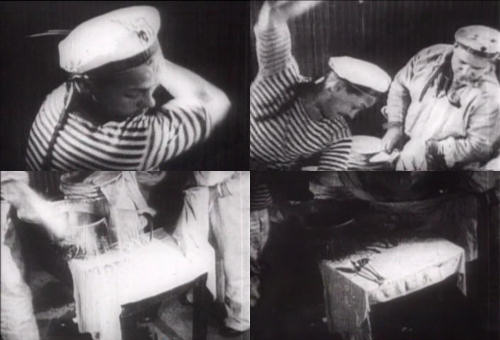
Whoa. 1926. The editing cuts and the camera shots almost seemed modern. I can see why Soviet Montage is such a subject of discussion in film studies. As I read the chapter in our book, I understood that older silent movies had very little camera movements and long shots. This 1926 film with its camera shots and the famous editing cuts as seen in the Odessa Steps sequence really were phenomenal and way ahead of its time (of course being that of a different style which would become a of editing style used today). There were a lot of scenes that really stood out beside the most cliched Odessa Steps sequence where I really admired the editing. The scenes of the bowl of borscht and the scene of the sailor smashing the plate were great examples of D. W. Griffith's style of editing. Instead of shooting a long, boring shot. The film was edited to include bits of other shots to interrupt the main concentration. The plate scene, as I recall, also made an attempt to be a continuous edit but with the interruption of a close up of the sailors hand wielding the plate. Although there were a few flaws, the uniqueness of the editing in this film really was impressive and explains Battleship Potemkin's reputation of being a groundbreaking film.

Great survey, I'm sure you're getting a great response. buy dvd last man standing season 6
ReplyDeletePlease share more like that. buy dvd tyrant season 2
ReplyDelete